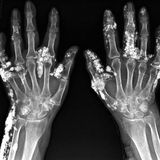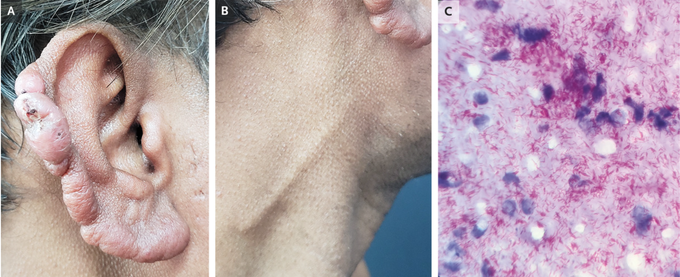


Lepromatous Leprosy
A 40-year-old man presented to the dermatology clinic with a 1-year history of painless swelling of his earlobes. He also reported having nasal congestion and intermittent nosebleeds. On examination, painless, indurated, contiguous nodules along the helixes of both ears were observed (Panel A). Thickening of the greater auricular nerve (Panel B) on both sides and patchy loss of sensation in the distal arms and legs were also present. Dermal fluid was obtained from an incision in the earlobe for a skin smear, which was stained with the use of the modified Ziehl–Neelsen method and examined under an oil-immersion lens. The skin smear showed innumerable acid-fast bacilli (Panel C). A diagnosis of lepromatous leprosy was made. Leprosy, also known as Hansen’s disease, is a chronic infection involving the skin and nerves that is caused by Mycobacterium leprae complex. Lepromatous leprosy, the most severe form, is characterized by a weak immune response and high burden of organisms. Patients with lepromatous leprosy often present with diffuse skin involvement and even infiltration of the nasal mucosa, as was observed in this patient. A 12-month course of uniform multidrug therapy was prescribed, but the patient was lost to follow-up after 2 months. Shekhar Neema, M.D. Santosh Battula, M.B., B.S. Armed Forces Medical College, Pune, India source: nejm.org

